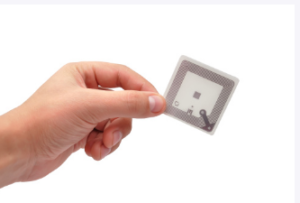Using RFID tracker tags reduces inventory tracking time from days to hours. It also improves productivity and safety.
Lost or misplaced equipment costs businesses money. For instance, it costs American Auto industries $750 million a year to replace lost reusable packaging and job site theft costs Construction companies $1 billion yearly.
It’s Simple
 Many industries use RFID tracking systems to improve productivity and reduce costs. In warehouses, the technology eliminates human errors in stock-taking, helps reduce losses and stolen goods and streamlines inventory processes. The hotel industry is no different; this tracking system is crucial in boosting efficiency.
Many industries use RFID tracking systems to improve productivity and reduce costs. In warehouses, the technology eliminates human errors in stock-taking, helps reduce losses and stolen goods and streamlines inventory processes. The hotel industry is no different; this tracking system is crucial in boosting efficiency.
RFID is a type of radiofrequency identification that uses electronic tags with microchips to store and transmit data. These tags are readable by RFID readers, which are wirelessly connected to antennas that pick up the signals transmitted by the RFID chips. An RFID tracker can tell you the location of a specific item at any time, and it does so without needing to see that particular tag physically or requiring the user to enter the information manually.
RFID tags are either passive or active, depending on the signal frequency. Passive tags are cheaper because they don’t have their onboard transmitter. They send or “reflect” back the call that a passive RFID reader first sent to them. Active tags have a battery and transmit their signal when within range of the reader. Both types of RFID tags are incredibly accurate and have wide applications in various industries.
For instance, hospitals can easily use RFID to track their assets. These may include medical equipment, beds, and wheelchairs for patients with dementia or other conditions. Ramprfid.com RFID tracker can help nurses and doctors locate these items quickly to attend to their patients as soon as possible.
In addition to its usefulness in hospital settings, RFID is also a critical tool for businesses that need to locate and track their shipments. An RFID tracking system enables companies to know the exact location of their assets and how long they’ve been in transit. This type of tracking system is much more accurate than GPS, which can only give a general location of the vehicle or asset.
A GPS tracking system requires connecting multiple satellites to determine an exact location. It is why it doesn’t work as effectively indoors, where many other wireless signals in the air can interfere with GPS readings. On the other hand, an RFID tracking system can provide precise locations even in large buildings with high accuracy. It is because an RFID sensor can detect a trilateral badge’s location within three meters.
It’s Fast
RFID (radio frequency identification) is a powerful tool for businesses of any size. It’s a faster, more accurate, and cheaper way to track inventory than traditional methods such as barcode scanners or engraved codes. RFID tracking allows businesses to instantly check in shipments of products or raw materials, streamlining receiving time and reducing labour costs. It’s also more secure than GPS tracking, which can be hacked or used to monitor the location of sensitive assets like laptops and fax machines.
The technology is affordable enough for even the smallest of businesses to implement. RFID tags can be purchased for a fraction of the price of barcode labels, and the systems are much more cost-effective than relying on employees to scan individual product barcodes. RFID tag data is transmitted automatically to an asset management system, eliminating the need for human intervention. It makes it easier for managers to monitor and manage inventory levels and identify potential problems in the supply chain.
In the past, RFID technology was limited to the most expensive industrial applications. However, advances in chip performance and reader antennas have made the technology more accessible to smaller companies. The ability to track and trace assets with the touch of a button has opened up new business opportunities.
For example, retailers use the ramprfid.com RFID tracker to offer to buy online, pickup in-store (BOPIS) service. It is a great way to increase customer satisfaction and meet expectations for omnichannel fulfilment. It also gives retail brands heightened inventory control, as they can provide customers with detailed stock information, such as model numbers and colours.